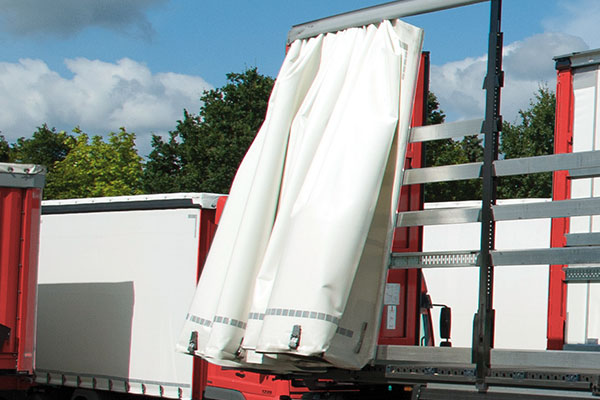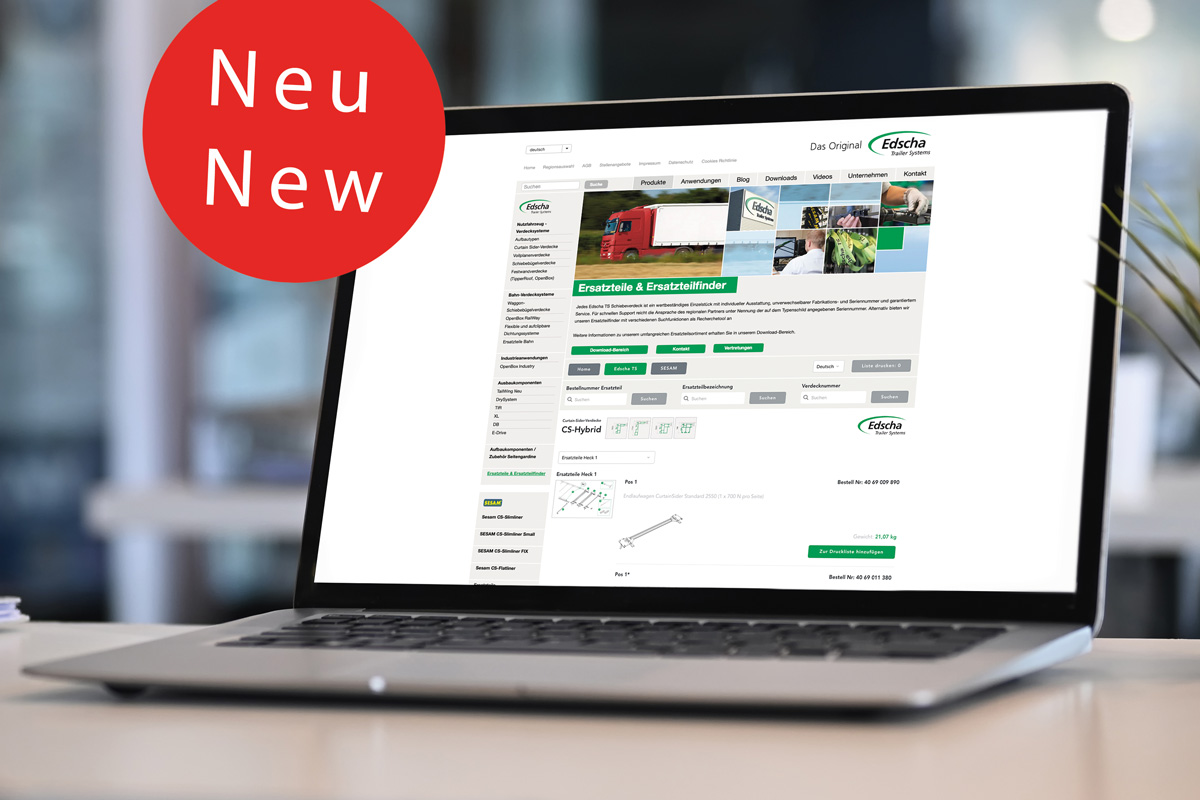More than just weather protection
The side curtain of the curtainsider has a whole range of tasks to perform. At first glance, this is to protect the load from the weather, such as rain, wind or snow. Properly stretched, the side curtain is visually perfect for your own company advertising or advertising for customers. Usually, the tensioning is done lengthwise via winding shafts and vertically via dead centre tensioners. This happens automatically with every closing process. Additional tasks of the side curtain are in the area of load securing in order to comply with StVO regulations. This is usually done by supporting the slats hanging behind it and/or integrated reinforcements. However, the side curtain must then comply with the BKTex guideline. Depending on the design and the load, this may even be sufficient as the only load restraint for EN12642XL-certified vehicles.
Peeping eyes undesirable
Other important tasks are the visual protection of the load and the prevention of illegal access. A distinction is made between the requirements of the customs authorities for sealing in international goods traffic, which is achieved by a TIR-compliant connection/securing of the sealed curtain, and the requirements of insurers and shippers of particularly valuable cargo, where, in addition to the TIR-compliant sealing, an effective reinforcement against cuts is built into the curtain. There are also tested specifications for the manufacture of such tarpaulins in the BKTex guideline of the Association of Processors of Technical Textiles.

Simple principle
Actually, opening and closing the side curtain of a curtainsider works exactly the same way as in your own four walls. But there are differences in handling: - after unlocking the closure and tensioning systems, first unhook the tensioning rod, go to the side where the curtain is to be opened and pull/pull in the fabric piece by piece.
Open easily
To ensure that the side curtain can be opened easily, make sure that
- that the sliders are slanted inwards in the upper area
- the first curtain roller is mounted as close as possible to the tensioning tube (<300mm)
- the tarpaulin rollers are well stored and in good order. To ensure this, make sure that the rollers are easy to replace, such as the EdschaTS side tarpaulin rollers.
- the curtain rollers are well supported on the roof girder, which can be achieved by decoupling the PVC-coated tarpaulins with sliding pieces or strips, or ideally by using curtain rollers with torque-supporting cross rollers, such as the EdschaTS SPR4 curtain roller.
Quick closing
Closing the curtain is a little easier by comparison. Here the pitfalls lie in proper closing and tensioning, where correct handling is crucial as follows. Among other things, it is important to thread the tensioning tube correctly at the top after closing and then to lower it completely down onto the square of the tensioning ratchet, because otherwise the components will quickly be overloaded. You should also fully tension the ratchet by hand and avoid using extensions if possible. Continue along the vehicle, hooking in all the lower tensioners one after the other and closing them over dead centre. Pull the belt down at the same time to ensure the correct tension. (Alternatively, in the case of direct tensioners, make sure that they are correctly adjusted). Do not forget to visually check the correct tension, supplemented by a pressure test between two stanchions. If, by the way, the lower tensioners were not tightened enough, there is a very high risk that they will come loose from the frame during bumps and vibrations and, in the worst case, be open several metres abruptly. In addition, the cracking of the tarpaulin rollers and the aluminium beams in the area of the middle stanchions increases considerably due to "dancing" in the running channel. And another tip: If there is too much tension, in exceptional cases it can lead to deformations in the roof rack area and to tension peaks in all components with likewise increased wear. Basically, however, a little more tension is much better than no tension!
Regular maintenance of the aluminium profiles and rollers, as well as the replacement of defective rollers, is necessary to ensure smooth operation.






